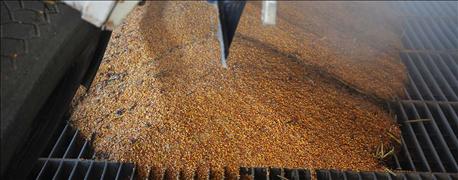
by Isis Almeida and Andy Hoffman
Some of the world’s top agricultural commodities traders say the era of slumping prices and low volatility isn’t over yet.
Crop prices that slid in the past three years still aren’t low enough to encourage output cuts, Matt Jansen, the chief executive officer of trader Cofco Agri, said on Tuesday at the Financial Times Commodities Global Summit in Lausanne, Switzerland. It’s harder for traders to profit from lower price volatility, Louis Dreyfus Co. and Cargill Inc. said.

The only hope for better trading conditions in the short term is a major weather event. (Photo: RGtimeline/Thinkstock)
"The situation with the markets in 2015 had been defined by lack of volatility," said Gonzalo Ramirez Martiarena, the CEO of Rotterdam-based Louis Dreyfus. "Going forward, I don’t see any big changes."
A measure of the Bloomberg Agriculture Subindex’s volatility is near a two-year low. Big harvests from Brazil to Russia have left the world awash with grains, pulling the gauge down 45 percent from a 2012 peak. Weak currencies in top producing nations have encouraged farmers to boost output and the International Grains Council sees global stockpiles staying near a 30-year high.
Earnings Impact
The collapse in commodities and lower volatility has taken a toll on agriculture businesses. Last year, Louis Dreyfus, the world’s largest rice and raw-cotton trader, had its lowest profit in a decade. Monsanto Co., the biggest seed company, reported a drop in fiscal second-quarter profit. While Cargill’s net income rose 8 percent in the three months through February, sales declined 11 percent.
"The markets are tough," Gert-Jan van den Akker, president of Cargill’s Agricultural Supply Chain, told the conference. "We have seen supply increase and at the end of the day, demand needs to increase to catch up with supply."
The only hope for better trading conditions in the short term is a major weather event that would damage crops, tighten supply and boost volatility, Ramirez and Van den Akker said.
With weaker currencies in South America, the region will probably produce another record soybean crop this year and possibly an all-time high for corn too, Cofco’s Jansen said. Ukraine and Russia will keep growing more corn and wheat because exports are profitable and field technologies have improved, Ramirez said.
No Cutbacks?
"The farmer in Argentina today is getting a better price than he did last year because of where the peso is, so there’s no reason for the Argentine farmer to cut production at all," Van den Akker said. Prices need to drop further to test at what levels growers will cut output, he said.
While Cargill says low prices are hurting American farmers, the U.S. Department of Agriculture said the country’s corn growers intend to plant the third-largest area in seven decades. Soybean prices at $9.50 a bushel and corn at $3.75 a bushel will encourage production growth, especially from Brazil, Jansen said.
Large harvests have come just as top grain buyer China plans to end a corn-stockpiling program. That’s fueled speculation that there’ll be more corn available as livestock feed, leading farmers to use less sorghum and barley, which would lower imports.
China has 200 million to 250 million metric tons of corn inventories, according to Cargill, a higher amount than the 109 million tons estimated by the USDA.
"There’s a tendency to move away from maintaining reserve stocks in the country and trying to move towards a market-facing type of economy," Jansen said. "If you think of the stocks that are in the country today, it will take some time to digest these inventories, probably a few years."
To contact the reporters on this story:
Isis Almeida in London at [email protected]
Andy Hoffman in Geneva at [email protected]
To contact the editors responsible for this story:
Lynn Thomasson at [email protected]
Nicholas Larkin
© 2016 Bloomberg L.P
About the Author(s)
You May Also Like




